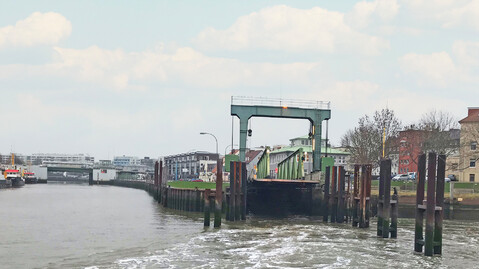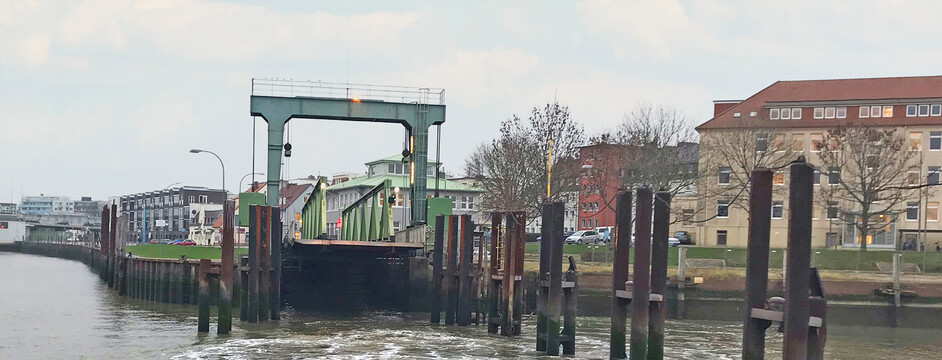
Reconstruction of the existing ferry pier on the Geeste estuary in Bremerhaven, Germany
Starting position
To ensure optimal protection against flooding in the coming years, flood protection in the Bremerhaven city area is being upgraded. In this context, the ferry pier for the Bremerhaven – Blexen connection needs to be relocated and therefore rebuilt.
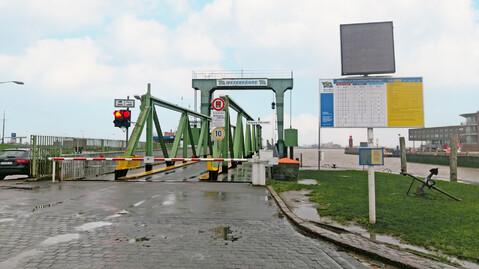
The Task
The new ferry pier is to be designed to accommodate the two existing ferries and will be used jointly by pedestrians, cyclists, cars and lorries as an access bridge. It consists of a portal, which houses the drives, and a superstructure mounted on the mainland. This superstructure is lowered and rests on the free end of the ship. It must therefore be able to compensate for changes in water level caused by tides or waves. DriveCon is responsible for planning the electrical engineering technical equipment for the reconstruction of the ferry pier.
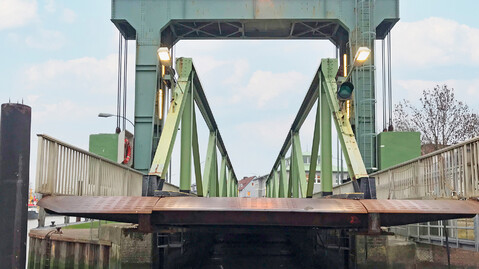
Services
The access bridge of the ferry pier is raised and lowered by means of a lifting winch (22 kW). This is operated by a drive powered by a frequency converter. The drive winch is controlled via a switchboard housed in the portal beam. At the top of the movable superstructure, an additional outdoor switchboard is provided to house the control and simultaneously serve as the ferry pier's operating station. The existing radio control of the current system will be integrated into this operating station. Thus, two operating options are available – via radio remote control or via push buttons on the switchboard on the superstructure.
The system is controlled by a state-of-the-art PLC control system. The ProfiNet bus system is used to network the control technology components. To bridge short-term fluctuations and failures of the supply voltage, the PLC control voltage is implemented via capacitor-buffered power supplies.
The network connection point is planned as a meter connection pillar at the abutment. One branch provides the supply for the ferry pier including its lighting; another branch supplies a traffic light system for pedestrians, cars and lorries, as well as the electrically operated barrier system that secures the entire access width. A maximum voltage drop of 5% is allowed up to the furthest consumer.
As part of the contract, the grounding, potential equalisation and lighting for the entire system were also planned, and a cost calculation according to DIN 276 was performed.
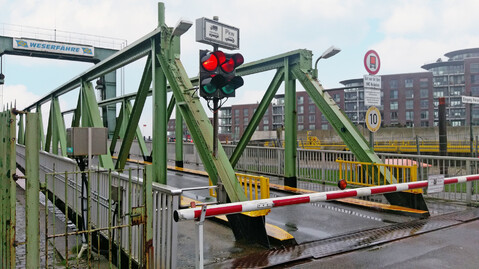
Challenges and special features
Since this facility is an essential point in the port city's infrastructure, special attention must be paid to its availability and ease of maintenance. The highest possible availability combined with robust hardware and intuitive operation – even in bad weather – formed the foundations of our planning.
